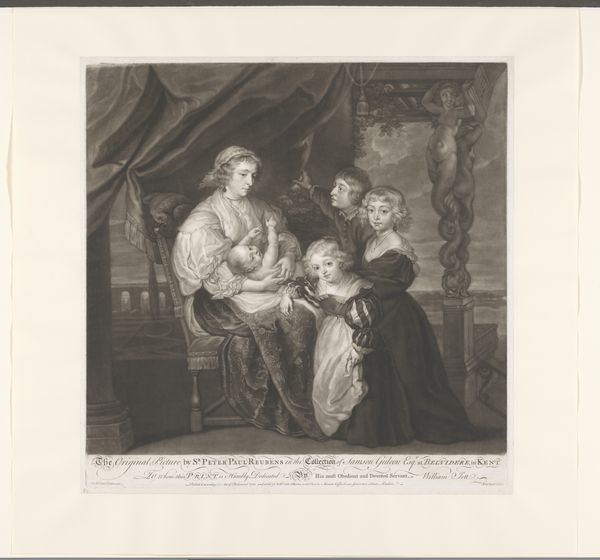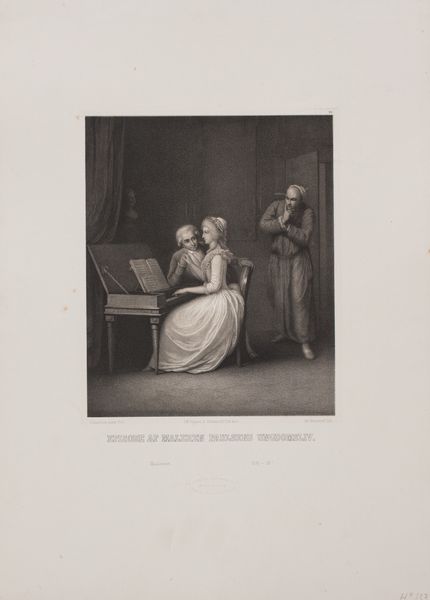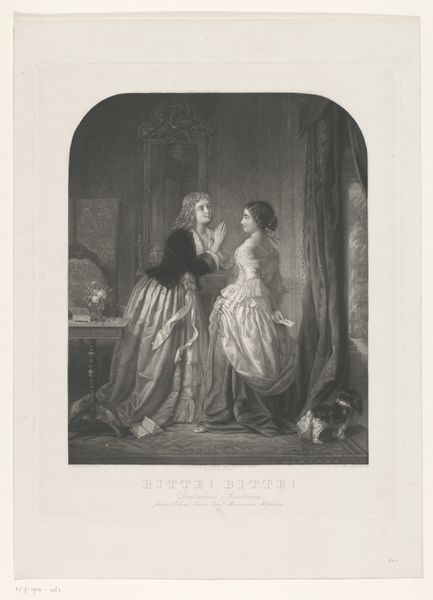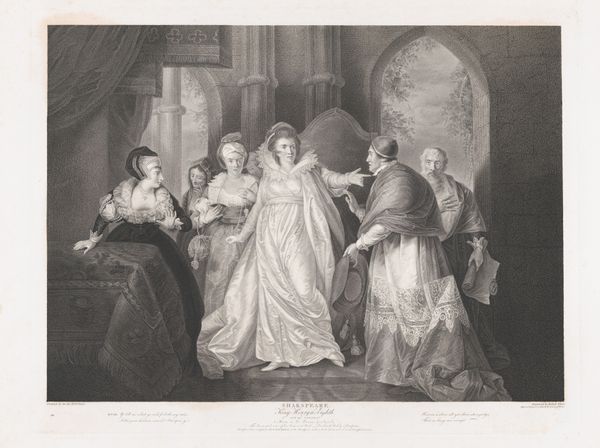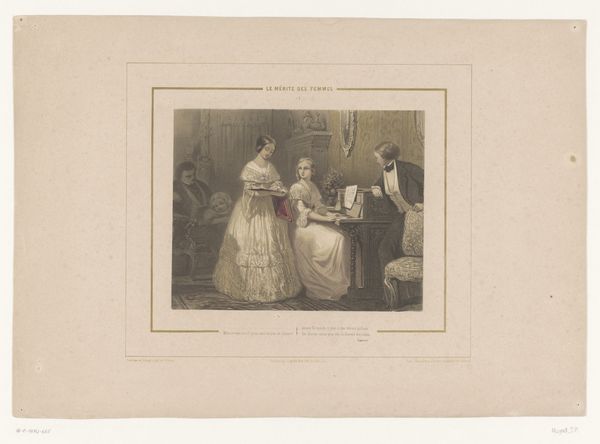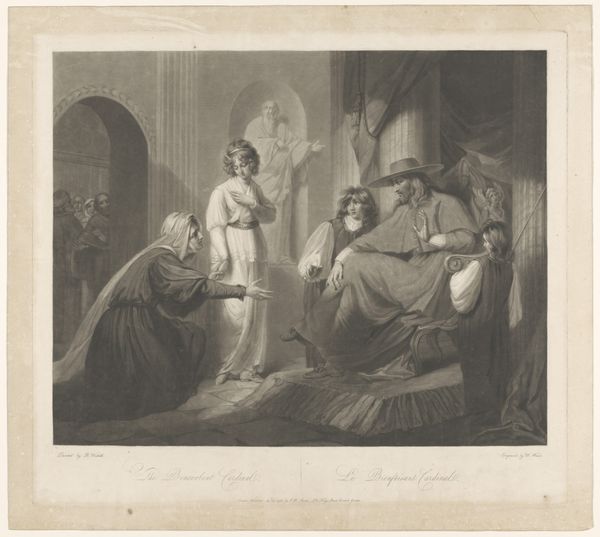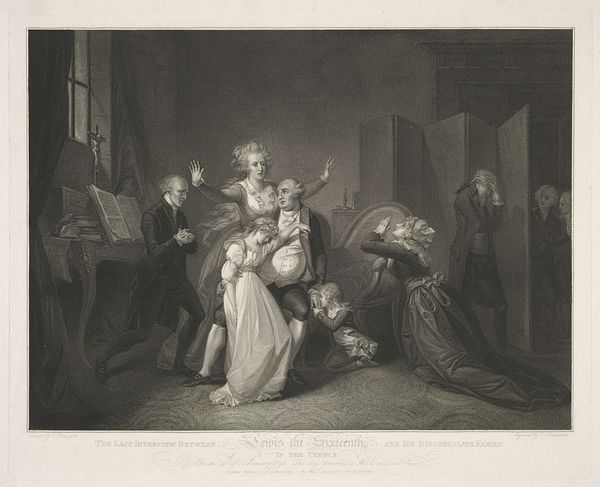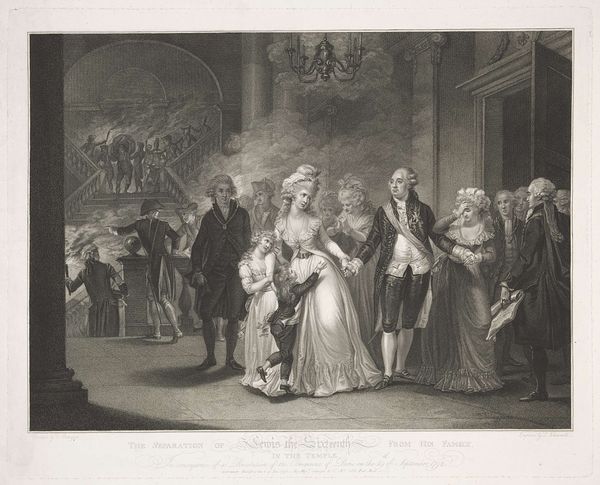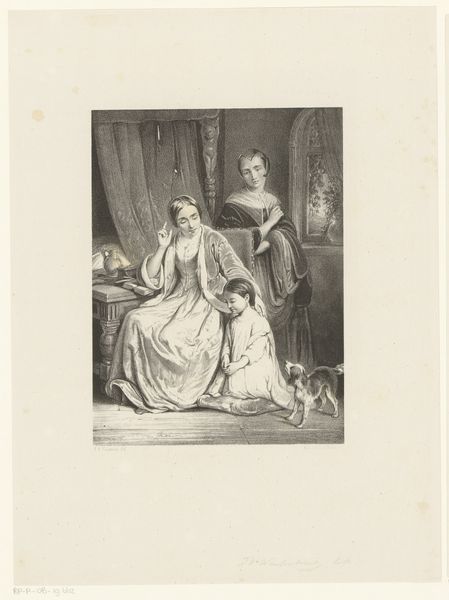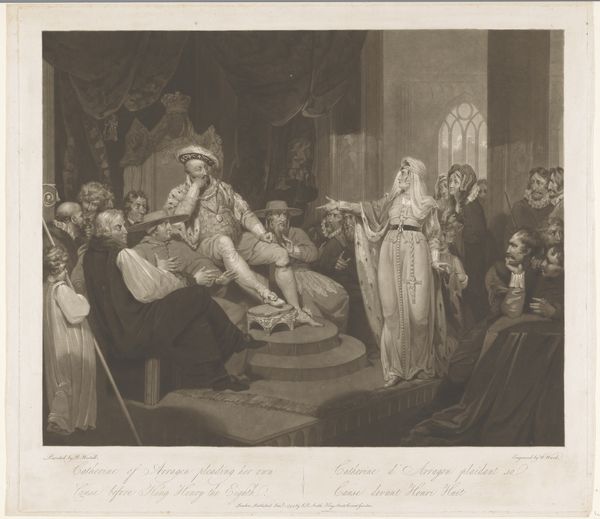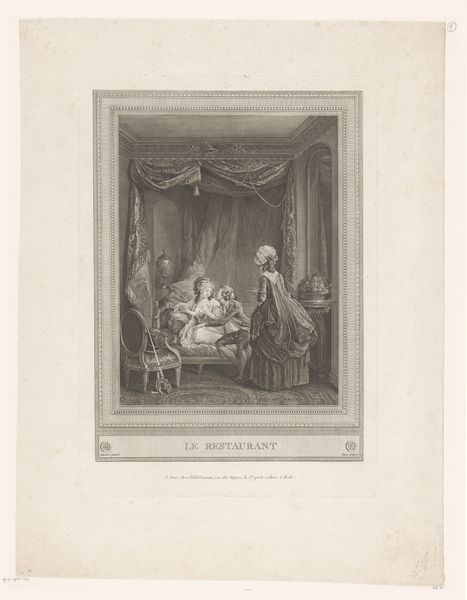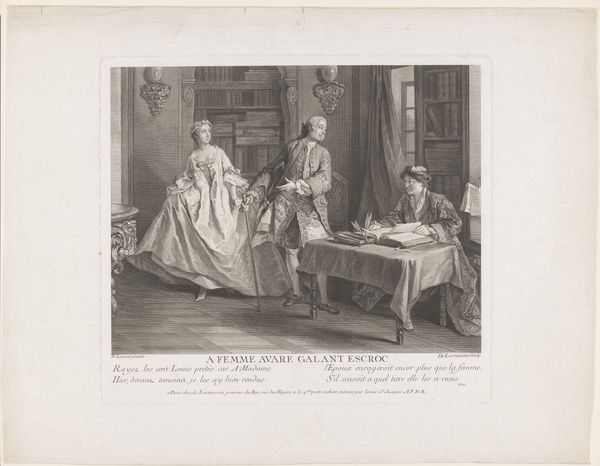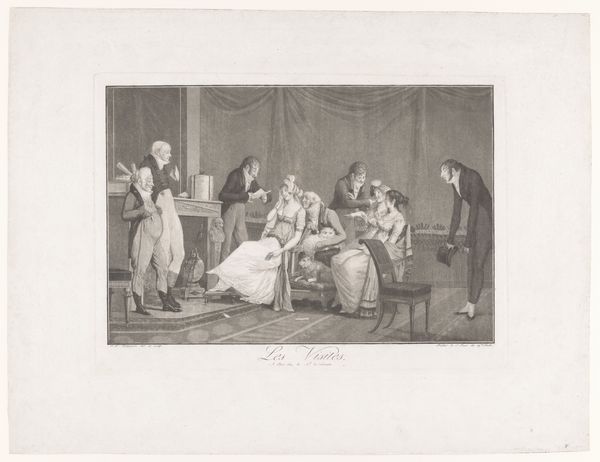
print, engraving
#
portrait
#
narrative-art
# print
#
genre-painting
#
northern-renaissance
#
engraving
Dimensions: height 424 mm, width 503 mm
Copyright: Rijks Museum: Open Domain
Editor: This is "Two Children with a Woman" by Albrecht Schultheiss, an engraving from the 1850s. I’m immediately struck by the somber atmosphere and the rather formal arrangement of the figures. What can you tell me about its context? Curator: Well, engravings like this one circulated widely in the 19th century, effectively acting as early forms of mass media. They allowed for the reproduction and distribution of imagery, shaping public perceptions on a grand scale. Consider what this particular image might be communicating to its audience. Editor: It looks like a scene from a play, almost staged, especially with the curtain. The woman looks rather regal and her gestures dramatic. Do you think this has any implications for it being portraiture, as the metadata suggests? Curator: Precisely! Think about portraiture not just as documentation, but also as social performance. The setting – the curtains, the patterned walls – and the subjects’ clothing place this scene firmly within a sphere of privilege and perhaps societal expectations. Are these orphaned children? Is she an adoptive mother or guardian? How might a contemporary viewer in the 1850s read this? Editor: So, the engraving isn't simply a neutral representation, but is participating in shaping ideas about class, family and societal responsibility. I see what you mean. Curator: Exactly! The choice to portray this scene, the way it's framed and disseminated through print media, all contribute to the social and political currents of the time. What do you make of its relationship to its patronage? Editor: That's really interesting. I hadn't considered the power dynamics inherent in producing and distributing these kinds of images back then. The layers of meaning really open up once we think about its circulation. Curator: Indeed. Reflecting on this work in the context of mass media provides important context and offers insight into its reception within the German states at the time. It encourages you to think more expansively.
Comments
No comments
Be the first to comment and join the conversation on the ultimate creative platform.
